By Margaret Paige Hoeschele, Epicure & Culture contributor
French baking is no laughing matter, especially when it comes to how to make croissants with puff pastry.
It’s true that la boulangerie (baking) et la pâtisserie (and pastry) are essential ingredients to the French cuisine.
As every baker knows — and as anyone who’s watched “The Great British Baking Show” fully appreciates — ingredients must be meticulously measured and carefully combined to create the best finished product, and the French take this consideration to a whole new level.
Creation and consumption of baked goods here are monitored strictly, and in some cases are regulated by law.
Literally.
Psst! Don’t forget to pin this post for later!
The Laws Of Baking Like the French
The French Décret Pain (Bread Law) of 1993 modifies regulations previously set in 1905 regarding the classification and production of bread.
In this décret, each type of bread — pain maison (bread of the home), pain de tradition française (bread of French tradition), and pain au levain (yeast or sourdough bread) — is explicitly defined by the proportions of necessary ingredients, and the appropriate means of preparation.
There are approximately 35,000 boulangeries-pâtisseries in France; about one per every 1,800 people.
Did you know there are approximately 35,000 boulangeries-pâtisseries in #France? Learn more here! Click To TweetIf you include the cafés and grocery stores here — who likewise create all their pastries and baked goods in-house — I imagine that number is much higher still.
In my new home city of Strasbourg, France, there are too many pâtisseries and boulangeries to count, with just about one on every street, and no less than five schools of pâtisserie.

Need further proof that correctly baked goods are of the utmost importance in French eating culture?
You need only take a trip here, step into a French bakery, smell the butter and flour wafting from the kitchens, and take a bite of a meticulously shaped and decorated mille-feuille — a pastry made of crème patissière and puff pastry.
Licking your lips, it’ll become clear the French treat all such things with immense care and attention to detail.
French Baking: More Than A Cake-Walk
So, what does this mean for me?
A self-declared foodie and amateur baker, I find all these rules and regulations intimidating, at the very least.
Baking back home seems like a cake-walk — pun intended.
“Sure, yes, I’d love to bake you that apple turnover from scratch,” I’d tell my friends who, being American, would be impressed with even my roughest attempts at baked goods made from start to finish.
The American rendition of #baking just doesn't stack up next to a real #French pastry here's to see the proof. Click To TweetAmerica Doesn’t Eat Like The French
That’s not to say Americans don’t have good taste; but the lack of bakeries on every street corner means we Americans know how to appreciate a good, hearty, imperfect, homemade pastry.
As my dad always says, “The imperfections show you made it yourself!”
He likes it better that way.
As for the French?
Not so much.
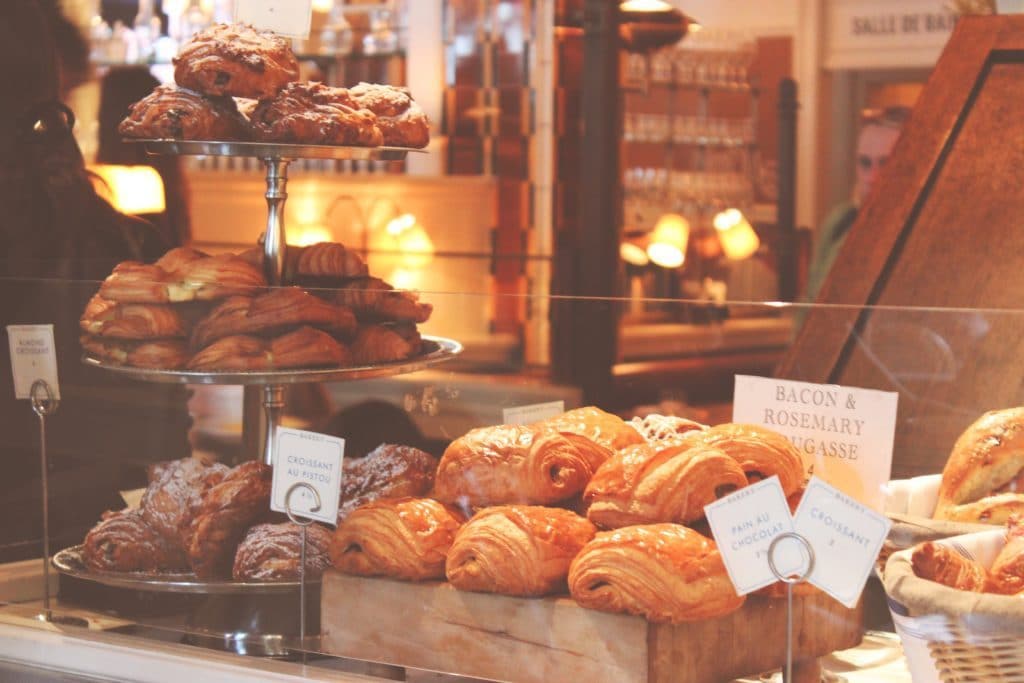
Nonetheless, as I settle into my new apartment on one of many beautiful boulevards in Strasbourg, I feel the need to put my chops to the test.
It’s time to dive back into the colorful, sugary world of amateur baking.
A Sweet Challenge: Puff Pastry Chocolate Croissants
So, here is my challenge to myself:
Make a homemade puff pastry — a challenge in and of itself, as the layering of butter and flour for a really fluffy and flaky puff can be painstakingly difficult — and compare it with a pastry from a French bakery.
And, to up the ante, I’m asking the most qualified food critics I can think of to test and comment on my pastry:
My two born-and-raised French roommates.
So, armed with a cup of black coffee — I have yet to find half & half in my neighborhood supermarché — I don my roommate’s veggie-covered apron, and prepare to dive into the baking of my pastry…
…until I realize that my roommates are not bakers, and have hardly any tools for baking.
So, I trade in my apron for a jacket and head out to the centre-ville (city center) to find the necessary equipment.
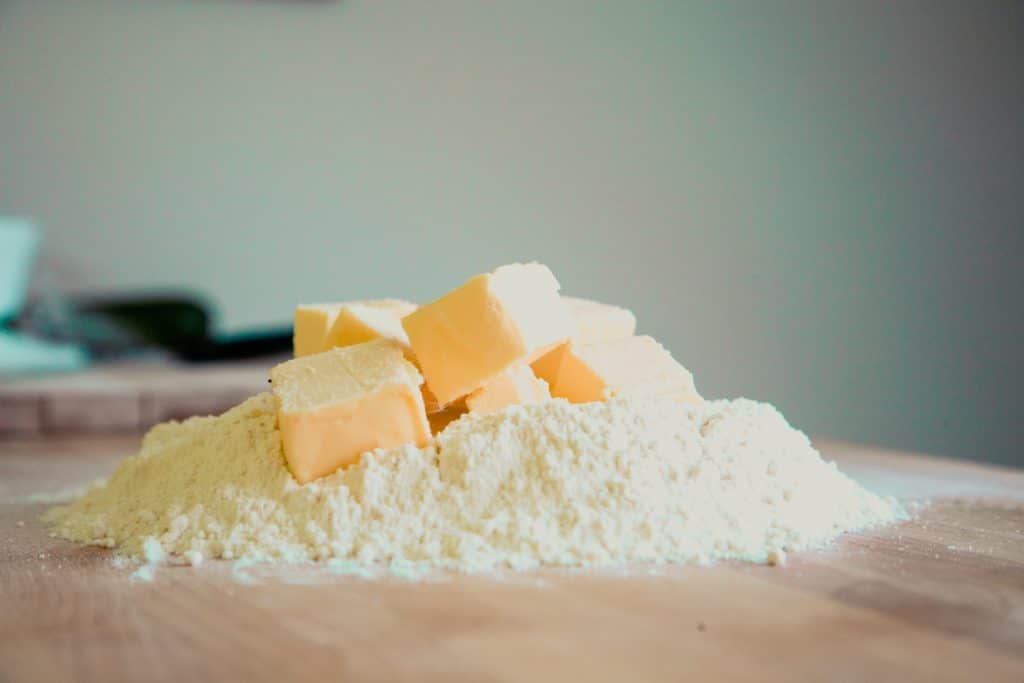
Once home, I prepare myself a second cup of black coffee.
And now, the work begins.
Allez, c’est parti. (Here we go.)
How To Make Puff Pastry: The French Way
I begin with a recipe for chocolate croissants — or pain au chocolat— from Buzzfeed Tasty.
I figure, for comparison’s sake, it’s good to start with the most simplified and Americanized version of this classic recipe.
This recipe uses yeast — a typical leavening agent most often used in bread baking — to fluff up the pastry, since typical puff pastry is too crunchy.
The resulting breakfast pastry should be a piece of soft, buttery, flaky heaven.
The second recipe I use does not contain yeast, so it’s more like a plain ol’ puff pastry, as opposed to the more bread-like breakfast pastry.
Since this dough is supposed to rest overnight, I combine the ingredients, fold lots of butter into the dough — if I know one thing about the French it’s that the love good butter — and then leave it in the freezer overnight, to finish prepping with chocolate in the morning.
The key to authentic French baking: lots and lots of #butter Click To Tweet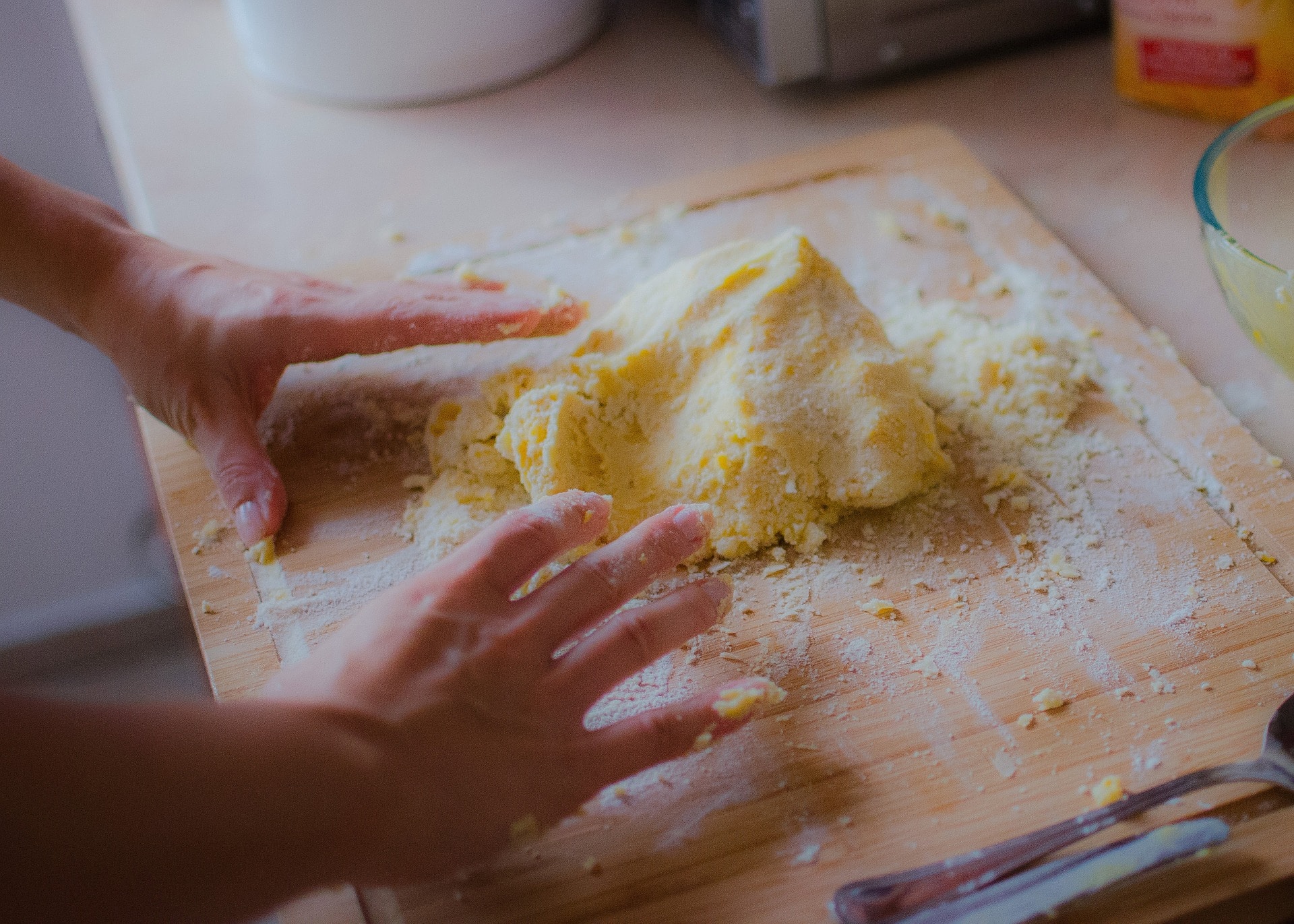
The second recipe is a combination of recipes from Julia Child’s cookbook, a book of recipes from Le Cordon Bleu — arguably one of the most well known and reputable schools of cooking in the world — and a how-to guide from Epicurious.
I’ve used this recipe before, with some success, so I hope this one will be a real winner.
The next morning, while sipping yet another cup of black coffee, I put my unshapely little pastries from recipe #1 into the oven.
Then, I assemble several more pastries using recipe #2, which all turn out equally as misshapen.
Still, I power through.
I know it’s the American in me, but despite their appearance, I can’t help but take pride in my ugly little creations.
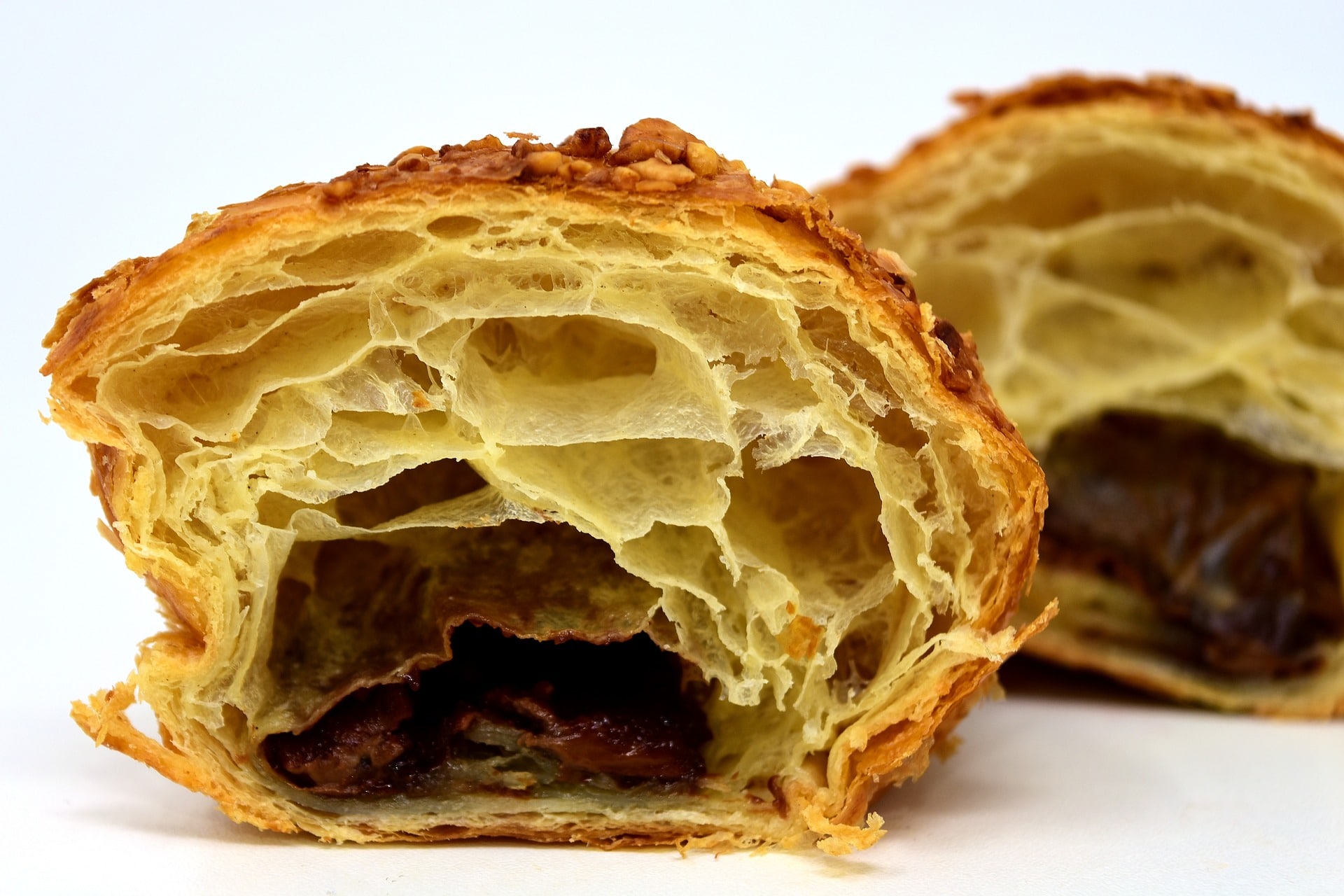
However, as I sit in front of my oven watching the pastries puff out, I can tell they are becoming more unsightly by the second.
Nonetheless, I figure they’ll taste alright.
That’s what matters, right?
There’s butter and there’s flour and that’s the important thing.
Sadly, I was not reassured as I pulled my creations out of the oven.
I took a bite of one to test — the least attractive of the bunch — and knew immediately that I would not come out on top of this challenge.
For comparison, a photo comparing my recipes vs. a pain au chocolat purchased at Paul, a French patisserie chain, of which there are several locations in Strasbourg.
Bet you can guess which ones are mine…
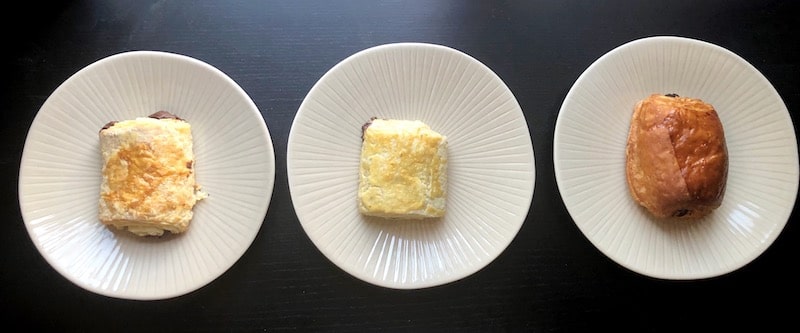
The Taste Test: The Best Croissant Recipe?
At the end of the day, I gather my roommates for a taste test.
I explain the experiment I’m doing, and tell them that they have to be honest.
I add that I’m not all too impressed with the end result either, and that it’s okay if they don’t like them.
Here were their responses, translated into English:
Paul: Wow, that’s gross! No, they’re not good.
Hamza: I don’t think this one’s cooked enough, but (referring to the recipe I compiled myself) it’s not a pain au chocolat.
I implore them to choose one or the other of my creations.
Paul: This one’s better (referring to the easy puff pastry recipe from Buzzfeed). It’s like bread with chocolate.
Hamza: I can’t decide, I pick neither.
I implore him further. “But if you had to pick one…”
Hamza: I can’t. Neither one.
So, there you have it, straight from the mouth of my French roommate turned food critic:
“Neither one.”
J’ai totalement raté. Failed. Baf. A swing and a miss.
Yet, this was also a very telling experience for me, and an appropriate introduction into my new French lifestyle.
The result reaffirms a quality — too often misunderstood and misinterpreted — that we can all appreciate within the French culture.
To them, if something is worth doing, it’s worth doing well.
There is, indeed, a reason as to why millions of tourists flock here every year to take in the impeccable scenery, the carefully aged wine, and the indulgent food:
The French know what they’re doing, and they take pride in it.
Thus, I’m not surprised and not too upset about this unsuccessful venture into my French kitchen.
Translation:
I’ll stick to my cookies and chocolate cakes and leave puff pastry for the professionals.
At least, for now.
It seems that these Frenchies do know exactly what they’re doing.
Lucky for me, in Strasbourg, with its innumerable patisseries et boulangeries, I need only walk out of my front door to get my fix.

French Baking: How To Make Croissants With Puff Pastry
Easy Chocolate Croissants
If you remain undeterred by my fails in the kitchen and want to take a stab at puff pastry yourself, I recommend this recipe by The Little French Baker.
What our your favorite baking #recipes? Here's some of ours! Hint: They include how to make puff pastry! Click To TweetMaking puff pastry and shaping croissants is no easy task, but this recipe makes the job a little less daunting for even the most amateur chefs.
It’s similar to most recipes for classic French croissants, and the author actually teaches readers how to make puff pastry from scratch, so you can learn from my mistakes!
Soyez courageux mes amis. We will one day conquer la pâtisserie!
Chocolate Croissant Ingredients
Making Croissant Dough:
- 4 2/3 cups (595gm) all-purpose flour
- 2 teaspoons salt (10 grams)
- 1⁄3 cup sugar (56 grams)
- 1 tablespoon instant yeast
- 6 1⁄2 ounces milk ( 200 grams)
- 1 cup water
- 2 tablespoons soft butter
Making Chocolate Croissant Filling:
- 3 sticks cold (11⁄2 cups) unsalted butter, the best you can find
- 2 tablespoons flour
- 1 egg for brushing the croissants
- Chocolate batons or bittersweet chocolate pieces for pain au chocolat
Chocolate Croissants: Step-By-Step Recipe
Step 1:
With a stand mixer fitted with the paddle or by hand, mix the ingredients (except cold butter and 2 tablespoons flour) until shaggy.
Step 2:
Gently knead for 1 to 2 minutes until smooth. Dough will be sticky. Place in lightly oiled bowl covered with plastic wrap and chill overnight.

Step 3:
The next day, cut the chocolate filling into 1⁄2-inch pieces, sprinkle with the 2 tablespoons flour, and pound between two pieces of parchment with a rolling pin or beat in mixer with flour until smooth.
Be sure to keep the butter cool. Shape into a 6×6 inch square about 1⁄2 inch thick.
Return to the refrigerator if your butter feels too soft.
Step 4:
Place the dough on your lightly floured work surface.
Roll the dough into a 7×14 inch rectangle.
Start with the narrow edge nearest to you. Place the butter square on the bottom half of the dough, and fold the top half over the butter.
Lightly seal the edges, and tap with the rolling pin to even out the thickness
Step 5:
Turn the dough one-quarter turn so the fold is on the left and could open like a book.
Roll the dough, keeping about the same width, to 24 inches in length. Fold the dough into thirds, as you would a letter.
Tap the dough to even the thickness, and turn again so the fold is on the left side.
You’ve just completed one turn!
Step 6:
Cover the dough lightly with plastic wrap and rest at room temperature for 20 minutes.
If your room is warmer than 72°F, and you have concern about the dough becoming too soft, you can also rest the dough in the refrigerator.
Step 7:
Make two more turns, waiting at least 20 minutes between turns.
Remember, if your room isn’t too warm, you don’t need to return to the refrigerator after each turn.
Each time you fold the dough, you’re making more and more layers of butter and dough.
When the butter heats and melts in the oven, the water in the butter will become steam.
The steam pushes the layers of dough apart creating the flaky light layers of the croissants.
Step 8:
For croissants, divide the dough into two portions. Roll the first piece of dough into a 6×18 inch rectangle.
Step 9:
Cut triangles with a bottom width of about 3 inches.
Roll the triangle to lengthen, cut a 1⁄2-inch slit on the bottom edge.
Starting at the bottom, roll the dough towards the point, gently stretching the dough. Use both hands, splaying them apart as you roll.
The slit will help widen the dough and create a traditional shape. It will take about three to four rolls to reach the end.
Step 10:
Place the croissants on a parchment-lined baking sheet, point side down.
Repeat with the second portion of dough.
Step 11:
For pain au chocolat, cut rectangles measuring 3×4 inches.
Place a chocolat baton at each end.
Step 12:
Roll/fold each end of the dough toward the center, then each end once again.
This will create a scroll shape.
Place the dough smooth side up, rolls down, on the baking sheet.
When finished shaping, cover and allow the pastries to rise at room temperature for 1 hour.
Step 13:
While the dough is rising, preheat your oven to 350°F.
Step 14:
Just before baking, beat the egg in a small bowl with a fork.
With a pastry brush, gently brush the tops of the croissants with egg wash.
Try not to let the egg to drip down the sides of the croissant onto the pan.
Step 15:
Bake at 350°F, for 30 minutes.
Rotate pan half way through if necessary.
Step 16:
To guarantee keeping croissants fresh, transfer pan to a cooking rack, and allow pastries to cool at least 30 minutes.
If you serve the croissants too soon, the butter will not have cooled, and the pastry will have a greasy feel and taste.
Step 17:
Enjoy!
Croissant Recipe Video
Wondering how to make puff pastry at home, but prefer to learn the art of making these chocolate croissants through a video?
It shows an easy method for how to make flaky croissants in your own kitchen.
You’ll learn the ins and outs of making croissants from scratch — including the key to rolling pastry dough and how to fold croissants.
After watching, you’ll be making a finished pastry so good it could be French!
When it comes to French baking, do you know how to make croissants with puff pastry? Any chocolate croissant recipes or tips to add? Please share in the comments below!
Enjoyed this post? Pin it for later!

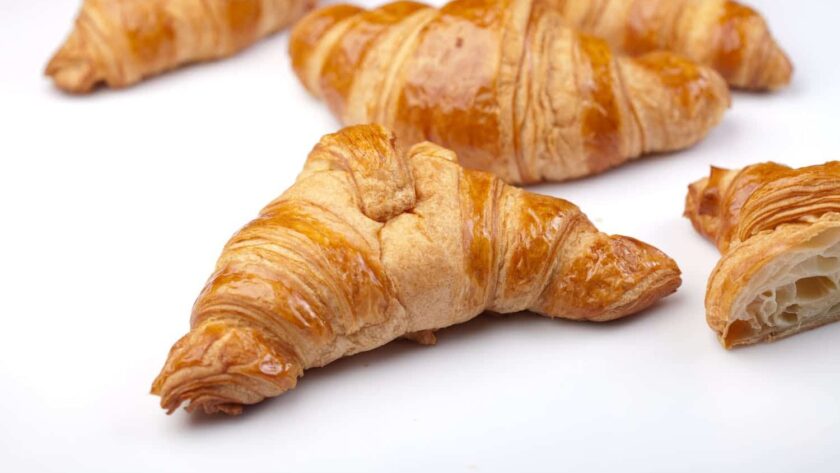
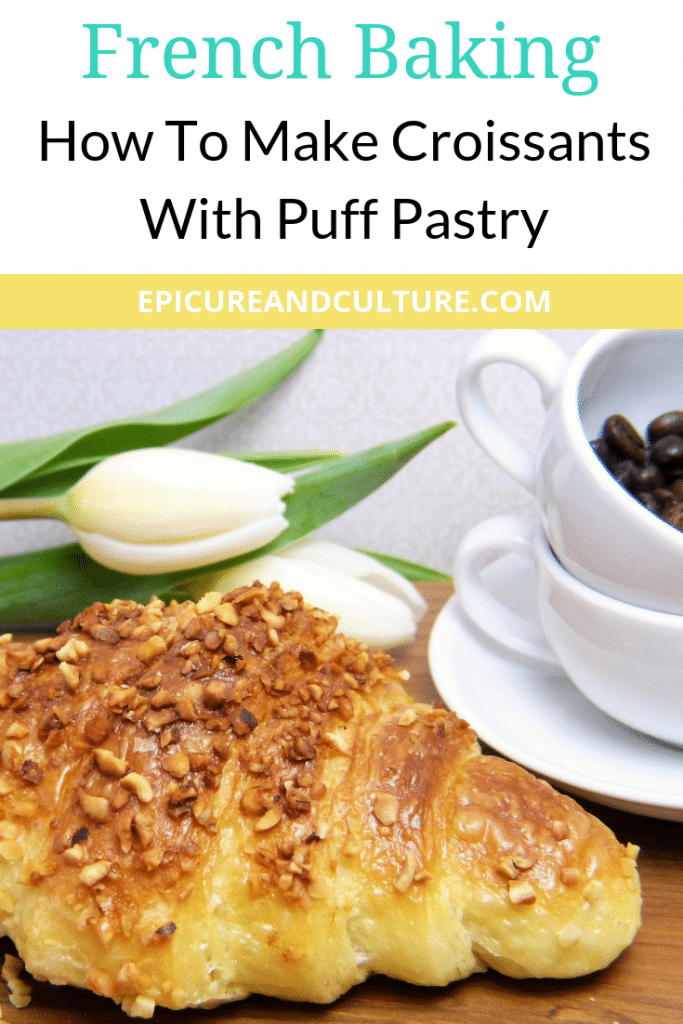




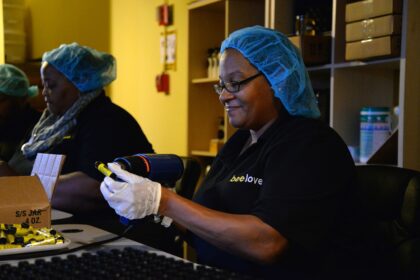



Oh wow! I love croissants. Can’t wait to try this! Thanks for sharing 😀 Definitely saving this.
Thanks Katie, hope your croissants turn out better than mine did!
How endearing to experience the patience, perfection, and honesty of France as home through creating and sharing your creations! Viva the blending and appreciation of cultural differences!
Thanks Diane! I’m glad to hear it was a good read for you!
What a lovely article, very well developed.